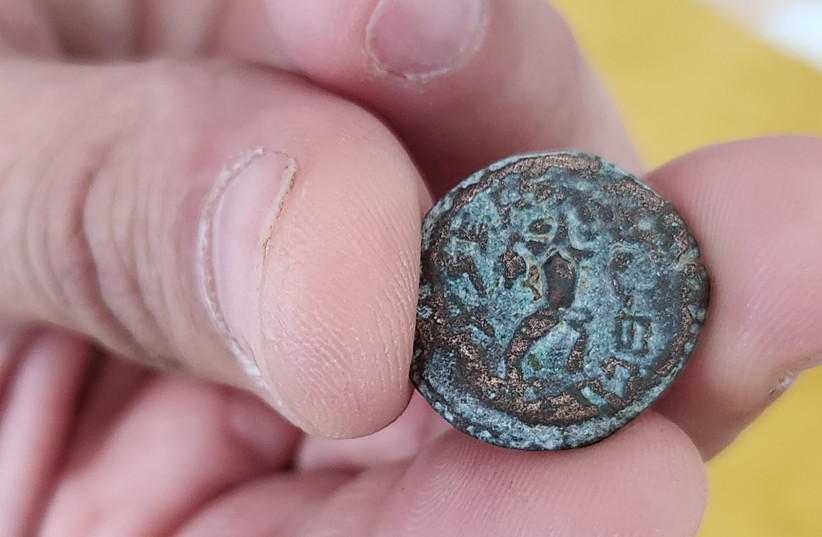Israel Police managed to recover 21 ancient coins, ranging from the Hasmonean era to the Muslim period, from an east Jerusalem resident who had illegally excavated them, the Israel Antiquities Authority announced Wednesday.
The arrest, carried out by the Jerusalem District police in conjunction with the Antiquities Authority, saw them take into custody an east Jerusalem resident in his 30s on suspicion of antiquities theft, illegally possessing archaeological artifacts, and attempting to illegally sell them.
The coins range from different time periods in Jerusalem's long history, some being from the time of the Romans and others being from when the city was under Muslim rule. All of these were allegedly excavated illegally by the suspect, who supposedly went to different archaeological sites in the Jerusalem area with metal detectors.
One of the coins, however, dates back to the Hasmoneon era, specifically depicting a Hasmoneon monarch.
According to Antiquities Authority expert Dr. Gabriela Bichovsky, the coin comes from the reign of King Antigonus II Mattathias, who ruled from 40 BCE to 37 BCE.

Also known as Antigonus the Hasmonean, he was the very last Jewish monarch in the Land of Israel, being the very last of the Hasmoneans. Despite being seen by many historians as being merely a puppet king on behalf of Rome's greatest geopolitical rivals, the Parthian Empire, Antigonus is a figure of considerable historic importance, having helped lead the Jewish fight for independence against the Romans. He is also said to be present in biblical writings as well, having been alleged by some scholars to be the "Wicked Priest" mentioned in the Dead Sea Scrolls.
His rule came to an end during Rome's eventual victory over the Hasmoneans, with Antigonus supposedly being killed personally by Roman triumvir Mark Antony – an account claimed by both Jewish contemporary historian Josephus and Roman historians alike.
Antigonus's death marked the end of Jewish sovereignty in the Land of Israel until the establishment of the State of Israel in 1948.
What was the coin from the reign of the last Jewish king of Israel?
One side of the coin depicts a cornucopia with the Hebrew inscription "Mattia Kohen Gadol," which references the fact that the Hasmoneons were also kohanim, the Jewish priestly class.
The other side of the coin has a wreath surrounding a Greek inscription.
"Mattathias minted three types of bronze coins during his reign. High value, medium value, and low value," Bichovsky said in a statement. "This coin is of medium value. It's rarer than the higher value one, which has two cornucopias instead of just one."
The coins from King Antigonus II Mattathias's reign are the rarest of all Hasmoneon coins. What makes them so special is that this king had a very unique way of making them. His coins were thick, seeming like they might be two coins stuck together. After that, the coins are then stamped with the images and inscriptions on the side. Finding a coin with the images on both sides still preserved is very rare.
However, the fact that the coin wasn't found in an archaeological excavation, but rather in a suspect's home, presents some problems for fully understanding the historical details around it.
"Removing the coin from the archaeological site where it was found limits our ability to understand the historical puzzle surrounding it," Antiquities Authority Director-General Eli Escozido said.
